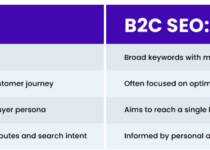A Very Human Guide to GEO Strategy for Content Marketing – How to Not Be Left Behind by Robots
Let’s get one thing clear straight away: if you work in content marketing and you aren’t sure how to start with GEO, that’s not your fault. Big Tech is moving faster than most businesses can keep up, and frankly, they’ve had a bit of a head start.
GEO stands for Generative Engine Optimisation, and no, it doesn’t mean slapping “AI” into every headline and calling it “innovation”. It’s about adapting your content strategy to search engines that now behave less like dusty librarians and more like enthusiastic interns fuelled by ChatGPT and two cans of Red Bull.
Still with me? Good. Let’s take a stroll through the world of GEO, and what it means for content marketers who still think in full sentences.
What is GEO?
GEO, which stands for Generative Engine Optimisation, is what marketers resort to when search engines stop being polite and start getting predictive. Tools like Google’s Search Generative Experience (SGE), Bing’s Copilot, ChatGPT and Perplexity don’t just give you links anymore, they generate answers. Entire paragraphs. Friendly little essays. Often with a helpful tone, sometimes with actual helpfulness.
GEO can boost content visibility by up to 40% in AI-generated search engine responses – based on rigorous evaluation across various domains and queries according to a recent study.
Users already expect AI-powered responses from their search tools, and search engines are obliging. This means the top of the funnel – that glorious moment when someone types “how do I…” – is being hijacked by large language models (LLMs). The organic links you used to battle for? They’re now buried beneath an AI summary.
You’re not competing for clicks anymore. You’re competing for a cameo in the AI-generated answer.
Click-through rates are taking a nosedive, and with them, organic traffic to news sites — once flowing freely via Google — has dropped to under 1.7 billion visits in May 2025, down from a high of over 2.3 billion in mid-2024.
What content marketing looks like after the revolution
Now let’s pretend you’re responsible for all the content on your website. You’ve got blogs, landing pages, maybe a whitepaper or two. You think you’ve ticked all the SEO boxes: keywords in subheadings, alt text on images, backlinks from that blog your mate runs. Lovely.
But here’s the problem: AI doesn’t care about all those SEO factors in the same way. It cares about usefulness, structure, and language that sounds like it was written by a nice person, not a robot pretending to be human.
Traditional SEO tactics like keyword optimisation performed poorly – about 10% worse than baseline – in AI-driven evaluations, according to data from a study on GEO by Princeton & IIT researchers.
Your content has to:
- Be clear enough to be quoted by AI.
- Be rich enough to be sourced by AI.
- Be structured enough to be understood by AI.
You’re writing not just for humans anymore, but also for the machines who talk to humans on your behalf.
Rule No. 1: write like a human being
A famous writer named Kurt Vonnegut once said, “Write to please just one person”. If he were still alive and kicking around the internet, he’d probably say something along the lines of: “write to please one person and confuse the bots just enough so they don’t steal your punchline.”
And that’s the real secret here: human tone matters more than ever. AI-generated summaries tend to be dry, factual, and a bit, well, soulless. If you write in a way that surprises, delights, or simply sounds like you’re not dead inside, you stand out.
Your favourite publications know this, and an interesting stat shows Reuters has enjoyed an 8.9% year-on-year boost in traffic from ChatGPT, with the New York Post close behind at 7.1%, and Business Insider not far off at 6%.
A few tricks that might help:
- Use the first person. Talk to people. Don’t explain at them.
- Tell stories. Actual stories. With people in them. Even weird ones.
- Be specific. “Good content” is bland. “Content that makes your reader want to kiss their screen” is memorable.
- Swear sparingly. Or not. (Up to you.)
GEO strategy in practice
(Or: what the smart kids are doing)
Let’s be practical. Here are a few ways to build a GEO-friendly content strategy without losing your soul:
- Create content that answers questions, and does it better than the robots: Think FAQs, how-tos, comparisons. But with personality. If the answer sounds like it came from a government pamphlet, start again.
- Structure your content with intent: Use headings like breadcrumbs. Paragraphs like stepping stones. And bullet points like life rafts. This helps generative engines lift your insights into their summaries.
- Update old content so it’s fit for a world run by LLMs: That blog from 2021 about trends in TikTok marketing? It’s a fossil. Refresh it. Add stats. Link to newer stuff. And sound excited.
- Optimise for visibility in AI-generated answers: That means adding clear, verifiable facts, not just fluff. Cite real data. Include links to reputable sources. (Even ones that aren’t your own.)
A small rant on creativity (Because it matters)
If you’ve read this far, congratulations: you still have the attention span required to do great marketing!
Because what the robots can’t do, at least not convincingly, is be creative on purpose. They remix. You originate.Use that power. GEO doesn’t require us all to write like LinkedIn “thought leaders”. It means we have to be more original, not less. You want the AI to quote you, not replace you.
In conclusion (Because even AI likes a tidy ending)
GEO strategy isn’t some dark art. It’s just content marketing, evolved. Or mutated. Or maybe zombified, depending on your mood.
But you can still do what humans do best: Connect. Explain. Tell stories. Add value. Surprise your reader. And above all, be a voice worth quoting.
Now go forth and write something that sounds like you actually meant it.
Whether you’re looking to boost visibility, stay ahead of the curve, or just make sense of where to start, we’re here to help. See how we can support your growth in this new era of search…
The post A Very Human Guide to GEO Strategy for Content Marketing – How to Not Be Left Behind by Robots appeared first on AccuraCast.



